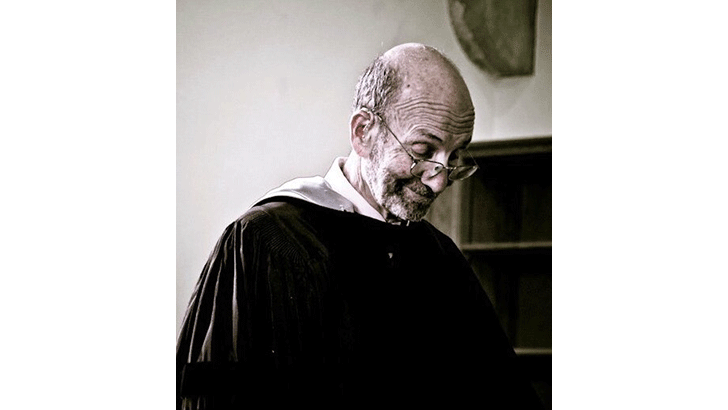In Memoriam: Kalman P. Bland (1942–2017)
Photo credit: Aasil Ahmad
Kalman P. Bland (1942–2017), a longtime member of the American Academy of Religion, was professor emeritus of religious studies at Duke University, amateur violist, conversationalist extraordinaire, and embodiment of the Platonic ideal of thoughtfulness.
Kalman received his BA in philosophy from Columbia University, his PhD in medieval Islamic and Jewish philosophy from Brandeis University, and his rabbinic ordination from the Jewish Theological Seminary in New York City. He began teaching at Indiana University before relocating to Durham, North Carolina, to take up a position at Duke, where he served on the faculty for 38 years. He was an award-winning undergraduate teacher and an important member of the graduate program.
He was an individual who pushed boundaries, who possessed a distaste for tribalism, and who loathed intellectual dishonesty or laziness, especially when used to legitimate unsavory truth claims. As he would often tell me, over one of our cherished dinners at the AAR or the AJS (Association for Jewish Studies), since so much of what motivates what and how we study and interpret the premodern sources derives from our present day reality and political persuasion, we can either interrogate the past’s inconvenient facts or paper over them. Fortunately he always did the former. This often made him a transgressor, a badge he wore with honor.
Kalman was the author of many articles and book chapters as well as two monographs. The first was a critical edition and translation of The Epistle on the Possibility of Conjunction with the Active Intellect by Ibn Rushd with the Commentary by Moses Narboni (JTS, 1982), and second, a much more adventurous work, entitled The Artless Jew: Medieval and Modern Affirmations and Denials of the Visual (Princeton University Press, 2001). The latter book is a learned and wide-ranging study that shows that it is the modern assumption of Jewish iconophobia—and not the second commandment—that denies to Jewish culture a visual dimension. It was an important work that helped to pave the path for a renewed interest in Jewish art history.
As I (Hughes) shared with him parts of my forthcoming monograph on Jewish-Muslim relations in the century after the death of Muhammad, he sent me the following quotation from Edward Said,
The real question is whether in the end we want to work for civilizations that are separate or whether we should be taking the more integrative but perhaps more difficult path, which is to see them as making one vast whole whose exact contours are impossible for any one person to grasp but whose certain existence we can intuit and feel.
This quotation, which I used as an epigraph, symbolizes, for me, the cosmopolitan thought of Kalman. He was as committed to Israeli-Arab coexistence in the present as he was to mapping out Jewish-Muslim interconnections in the past.
He carried a heavy heart for the suffering and displacement of Palestinians. On his return from Israel in June 2008, he wrote to me (Mian): “I’m still processing my impressions from Jerusalem, but it was in many respects heart breaking to see so much suffering inflicted on the Palestinians. To see pictures of the wall is one thing, to see the wall itself is devastating.” I had the privilege of meeting bi-weekly with Professor Bland for many years during my graduate studies at Duke. Professor Bland often recalled the Arabicate context of medieval Jewish thought and culture in nostalgic terms. He insistently pressed upon me the importance of contextualizing medieval Jewish thinkers such as Saadia and Maimonides within their Islamicate milieu. Yet, he was no romantic thinker. He asked tough questions about past and present instances of violence and suffering, whether perpetrated by Jews, Christians, or Muslims. He embraced the exile and estrangement that often accompany unconditional loyalty to critical thinking. To embrace exile, as he once wrote to me, “is a form of being Socrates.”
At the time of his death Kalman was working on a book devoted to the subject of animals in medieval Jewish philosophy. This was not simply a project that documented their textual deployment or whether they were kosher or treyf, but a full-scale philosophical analysis with political and humanistic implications far beyond the narrow field of medieval Jewish philosophy. A taste of the project will appear as “Animal Fables and Medieval Jewish Philosophy,” in The Literary Forms of Medieval Jewish Philosophy, ed. Aaron W. Hughes and James T. Robinson (Indiana University Press, 2018).
A memorial celebration will be held for Kalman on Sunday, September 17, 2017 at the National Humanities Center (7 T.W. Alexander Dr, Research Triangle Park, NC 27709) from 3:00–5:00 p.m.






